University of Bern
| Universität Bern | |
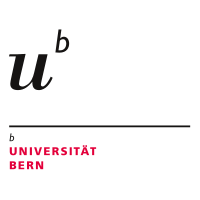 | |
| Latin: Universitas Bernensis | |
| Type | Public (cantonal) |
|---|---|
| Established | 1834 |
| Budget | CHF 832 million (third-party funds: CHF 258 million) |
| Rector | Christian Leumann |
Administrative staff | 4,108 (professors: 494) |
| Students | 17,430 (female enrolment: 56%; international enrolment: 13%) (all figures as of 31 December 2015)[1] |
| Address | Universität Bern, CH-3012 Bern, Switzerland, Bern, Switzerland |
| Website | http://www.unibe.ch/eng/ |

The University of Bern (German: Universität Bern, French: Université de Berne, Latin: Universitas Bernensis) is a university in the Swiss capital of Bern and was founded in 1834.[2] It is regulated and financed by the Canton of Bern. It is a comprehensive university offering a broad choice of courses and programs in eight faculties and some 150 institutes.[3] With around 17,428 students, the University of Bern is the third biggest University in Switzerland.[4]
Overview
Organization
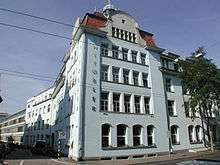
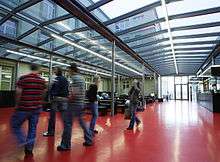
The University of Bern operates at three levels: university, faculties and institutes. Other organizational units include interfaculty and general university units. The university's highest governing body is the Senate, which is responsible for issuing statutes, rules and regulations. Directly answerable to the Senate is the University Board of Directors, the governing body for university management and coordination. The Board comprises the Rector, the Vice-Rectors and the Administrative Director. The structures and functions of the University Board of Directors and the other organizational units are regulated by the Universities Act. The University of Bern offers about 39 bachelor and 72 master programs, with enrolments of 7,869 and 4,425, respectively. The university also has 2,648 doctoral students. Around 1,575 bachelor, 1,566 master's degree students and 534 PhD students graduate each year. For some time now, the university has had more female than male students; at the end of 2014, women accounted for 56% of students.
Locality
Unlike other universities, the University of Bern does not have a single large campus on the edge of the city, but has consistently pursued the principle of a university in the city. Most institutes and clinics are still in the Länggasse, the traditional university district adjoining the city centre, and within walking distance of one another. The University has won many awards for its intelligent, ecological and sustainable use of old buildings. For instance, the Faculty of Theology and various institutes in the Faculty of Humanities are now housed in an old chocolate factory (the Unitobler), and in 2005 the former women's hospital was refurbished to serve as a university centre for institutes in the Faculty of Law and Department of Economics (the UniS).[5] The vonRoll site, another former factory building, is in the process of being refurbished to house the Faculty of Human Sciences and the Department of Social Sciences.
History
Early history: Collegiate school and academy (1500–1834)
The roots of the University of Bern go back to the sixteenth century, when, as a consequence of the Reformation, a collegiate school was needed to train new pastors. As part of its reorganization of higher education, the government of Bern transformed the existing theological college into an academy with four faculties in 1805. Henceforth, it was possible to study not only theology in Bern, but also law and medicine.
The old university: New beginning and development (1834–1900)
As in other countries of Europe, nineteenth century politics in Switzerland were dominated by the struggle between conservative and liberal currents. The liberals gained control of the Canton of Bern in 1831 and in 1834 turned the academy into a university, with an academic staff of 45 to teach 167 students. Owing to the political situation, it was not until the promulgation of the federal constitution in 1848 that the university was able to embark on a period of peaceful development. Between 1885 and 1900, the number of students doubled from 500 to 1,000. As a result, at the turn of the twentieth century the University of Bern was the largest university in Switzerland. This rapid growth reflected the university's attraction for foreign students, in particular Germans and Russians, who accounted for half of the total enrolment. It was also Russian female students who in the 1870s won the right for women to study.
The new university: New building and consolidation (1900–1950)
With the growing prosperity of the city of Bern, the university in the Länggasse quarter expanded at the end of the 19th century. In 1903, a new Main Building was inaugurated on the Grosse Schanze and the number of faculties increased. In 1908–09, three prominent persons put the University of Bern in the limelight. In 1908, Albert Einstein taught the first of three semesters of theoretical physics. The following year, Anna Tumarkin, a Russian philosopher, was appointed to an extraordinary professorship and thus became the first female professor at a European university entitled to examine doctoral and post-doctoral theses. Also in 1909, Theodor Kocher, a Bernese surgeon, was awarded the Nobel Prize in Medicine. In the following years the university consolidated its position as a small centre of higher learning with a stable enrollment of about 2,000 students.
The modern university: Expansion and reorganization (1950–2000)
After World War II, a growing number of voices called for the expansion of tertiary education in Switzerland. Rapid growth in the 1950s and 1960s – enrolment at the University of Bern had already reached 5,000 in 1968 – generated pressure to adapt to the changed circumstances. The modern, completely revised University Act of 1996 transformed the University of Bern from an administrative division of the Department of Education of the Canton of Bern into an autonomous institution that was a legal entity in its own right. In addition, the Act clearly defined the competencies of the university and of the state. The university passed another milestone in 1992, when its enrolment reached 10,000.
The university today: Bologna Reform and restructuring (since 2000)
The Bologna Declaration ushered in the era of ECTS credits and the bachelor's and master's degree structure. The university set strategic research priorities, such as climate research, and promoted inter-university cooperation. At the same time, the university reorganized its faculties. With the amendment to the University Act in summer 2010, the University Board of Directors acquired the right to choose its own ordinary professors and keep its own accounts separate from the state. The University Board of Directors formulated a strategy in 2013. It builds on the previous strategy of 2006, the 2012 mission statement and the performance mandate for the University from the Cantonal Government. Sub-strategies were defined as well.[6]
Structure
Faculties

The University of Bern has eight faculties:
- Theology
- Law
- Business, Economics and Social Sciences
- Medicine
- Veterinary Medicine (Vetsuisse)
- Humanities
- Science
- Human Sciences
The medical faculties of the Universities of Bern and Basel have formed a strategic alliance in the fields of cardiac surgery, neurosurgery, pathology and microbiology. The Vetsuisse Faculty was created in 2006 through the merger of the Faculties of veterinary medicine of the Universities of Bern and Zurich. The Humanities Faculty is comparable to the arts and sciences departments of American universities and offers majors in the three areas of art and culture, archaeology and history, and languages and literature. The Faculty of Science focuses on the natural and life sciences. The Human Sciences Faculty was founded in 2005 and offers study programmes in education, sports and psychology.
General university institutions
There are four general institutions associated with the University of Bern:
- Collegium generale (CG)
- Forum for University and Society (Forum für Universität und Gesellschaft, FUG)
- Interdisciplinary Centre for Gender Studies (Interdisziplinäres Zentrum für Geschlechterforschung, IZFG)
- Centre for Continuing University Education (Zentrum für universitäre Weiterbildung, ZUW)
The function of these general university institutions is to promote dialogue between students in different disciplines and faculties through interdisciplinary events for academic staff and students. The Centre for Continuing University Education (ZUW) focuses on scientific further education. The selection of topics in the ZUW programmes ranges from public administration through dentistry to spiritual guidance. In addition, the University of Bern has also taken the lead in the German-speaking world in creating a number of novel study programmes, for instance Evaluation.[7]
Interdisciplinary centres
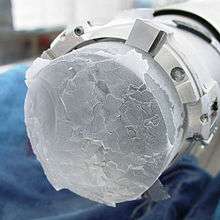
There are 12 interdisciplinary centres at the University of Berne:
- Albert Einstein Center for Fundamental Physics (AEC)
- ARTORG Center for Biomedical Engineering Research
- Center for Cognition, Learning and Memory (CCLM)
- Center for Cultural Studies (CCS)
- Centre for Development and Environment (CDE)
- Center for Global Studies (CGS)
- Center for Regional Economic Development (CRED)
- Center for Space and Habitability (CSH)
- Center for the Study of Language and Society (CSLS)
- Center of Competence for Public Management (CCPM)
- Oeschger Centre for Climate Change Research (OCCR)
- World Trade Institute (WTI)
The University of Bern has made a name for itself in fields as diverse as climate research, biomedicine and sustainable development research. The university has defined specific focuses of research as strategic and has established interdisciplinary centres of competence for these that pursue an interdisciplinary approach to research and teaching. The centres of competence also offer specialized masters programmes, for example the biomedical engineering programmes of the Artificial Organ (ARTORG) Center for Biomedical Engineering Research and the Public Management and Policy programme of the Center of Competence for Public Management (CCPM).
The Centre for Development and Environment (CDE) carries on the University of Bern's long tradition in sustainable development research. The CDE also manages the NCCR North-South, Switzerland's leading research programme in the fields of global change and sustainable development, focusing on its particular areas of expertise in integrated regional development and natural resource management. The related field of international trade is the focus of the NCCR Trade Regulation, which is housed at the World Trade Institute (WTI) of the University of Bern. The WTI is a global leader among academic institutes focused on the legal, economic and political aspects of international trade regulation.
Academic Programs
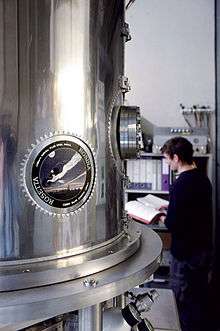
As a comprehensive university, Bern covers a wide range of classical university courses in some 39 bachelor, 71 master and 69 advanced study programs. The Physics Institute contributed to the first flight to the moon and still carries out experiments and provides apparatus for NASA and ESA space missions on a regular basis.[8][9]
In addition to the classical disciplines, the University of Bern has also established a reputation in newer ones such as sports science and theatre studies. It is the only institution in Switzerland with a theatre studies course that enables students to major in dance in their master program. Bern is also the world’s only university to offer Christian Catholic Theology as a major in the theology course. The Graduate Schools for doctoral candidates offer further-reaching programmes that are closely linked to the University's successful research priorities in the fields of climate science, health care and penal law and criminology.
Notable people
Professors
A number of professors at the University of Bern were pioneers in their field. The Russian-born Anna Tumarkin was the first female professor in Europe with the right to examine doctoral and post-doctoral students. The physician Gabriel Gustav Valentin was the first Jewish professor to be elected to a chair at a German-speaking university. Theodor Oskar Rubeli was co-responsible for founding the first faculty of veterinary medicine in the world. Finally, the ice core analyses of physicist Hans Oeschger played a pioneering role in the development of climate research. Other notable academics at the University of Bern include (by faculty):
- Theology
Eduard Herzog, Ulrich Luz, Adolf Schlatter, Lukas Vischer, Eduard Zeller
- Law
- Medicine
Jakob Klaesi, Emil Theodor Kocher, Hugo Kronecker, Theodor Langhans, Ludwig Lichtheim, Maurice Edmond Müller, Fritz de Quervain, Hermann Sahli, Gabriel Gustav Valentin
- Humanities
Andreas Alföldi, Carl Heinrich Wilhelm Hagen, Julius Pokorny, Ignaz Paul Vitalis Troxler, Anna Tumarkin, Hermann Usener
- Natural sciences
Albert Einstein, Heinrich Greinacher, Hans Oeschger, Ludwig Schläfli, Bernhard Studer, Hugo von Mohl, Heinrich von Wild
- Economics
- Others
Theodor Oskar Rubeli
Students
The following prominent persons studied at the University of Bern (occupation in parentheses):
- Karl Barth – theologian and „a twentieth-century Father of the Church
- Carl Baudenbacher – lawyer and President of the EFTA Court
- Walter Benjamin – philosopher and literary critic
- Richard Bing – cardiologist and composer
- Hans Bloesch - writer, correspondent, editor, librarian
- Hans Blum – writer and lawyer
- John le Carré – writer
- Andreas Dorschel – philosopher
- Friedrich Dürrenmatt – writer
- René Fasel – President of the International Ice Hockey Federation and Member of the International Olympic Committee
- Selma Feldbach, the first Estonian woman to become a medical doctor
- Markus Feldmann – politician and federal councillor
- Niklaus Gerber – chemist and Swiss dairy industry pioneer
- Rudolf Gnägi – politician and federal councillor
- Jeremias Gotthelf – novelist and pastor
- Lazar Grünhut – rabbi and writer, Zionist activist
- Thomas Jordan – chairman of the Swiss National Bank
- Yehezkel Kaufmann – philosopher and theologian
- Peter Lampe – theologian and professor
- Adolfo Lutz – specialist in tropical medicine and epidemiologist
- Mani Matter – singer-songwriter and lawyer
- Kurt Marti – theologian, poet and writer
- Eduard Müller – politician and federal councillor
- Werner Munzinger – Africa explorer
- Hassan Naim - Lebanese-Swiss biochemist
- Ulrich Ochsenbein – federal councillor and general, founding member of the Swiss Confederation
- Edith Pechey – physician and campaigner for women's rights
- Rolf Reber – psychologist and professor
- Olga Roh – founder of Rohmir
- Regula Rytz – politician, sociologist and historian
- Karl Schenk – politician and, in office for 31 years, longest-serving federal councillor
- Karl Scheurer – politician and federal councillor
- Samuel Schmid – politician and federal councillor
- Nikolaus Senn (1926–2014), former co-director of Schweizerische Bankgesellschaft
- Jakob Stämpfli – politician and federal councillor, lawyer and journalist
- Hans Martin Sutermeister – physician, politician and free-thinker
- Daniel Vasella – chairman and CEO of Novartis
- Nikolaj Velimirović – Serbian Orthodox bishop and saint
- Carl Vogt – scientist and politician
- Kurt Wüthrich – chemist, winner of Nobel Prize in Chemistry 2002
- Ursula Wyss – economist and politician
- Jean Ziegler – sociologist, politician and writer
Honorary doctorates
In the course of its history, the University of Bern has awarded honorary doctorates to outstanding people for contributions in different fields of society.[10][11][12]
- Medicine
Sir Edward Albert Sharpey-Schafer, Sir Charles Scott Sherrington, César Roux, SIr Alan Lloyd Hodgkin, Georg von Békésy, Stephen W. Kuffler, George Emil Palade, Willy Burgdorfer, Iván Böszörményi-Nagy, David Sackett, Luc Pettavino
- Natural sciences
Johann Büttikofer, Hans von Euler-Chelpin, Gerold Schwarzenbach, Richard R. Ernst, David Southwood
- Economics and business
Ernst Karl Abbe, Auguste and Louis Lumière, Jean-Daniel Gerber, Thomas J. Sargent, Maureen O'Hara (professor)
- Humanities
Albert Samuel Gatschet, Erwin Heinz Ackerknecht
- Art
Joseph Simon Volmar, Albert Anker, Cuno Amiet, Rudolf Münger, Alberto Giacometti, Walter Linsenmaier, Ilya Kabakov
- Literature
Charles Ferdinand Ramuz, René Gardi, Kurt Marti, Stefan Heym, John Edgar Wideman, John le Carré, Eveline Hasler
- Politics
Charles Albert Gobat, Rudolf Minger, Annemarie Huber-Hotz, Adolf Ogi, Angela Merkel, Son Altesse Sérénissime le Prince Albert II de Monaco
- Others
Hermann Müller-Thurgau, Eduard Herzog, Mathis Wackernagel, Heidi Tagliavini, Hannah Cotton, Stephen Kosslyn
Rankings
Today the University of Bern is one of the top 200 universities in the world. In the QS World University Rankings 2014 it ranked 145th.[13] The Shanghai Ranking (ARWU) 2014/2015 ranked the University of Bern in the range 151st–200th in the world.[14] In the Leiden Ranking 2015 it ranked 122nd in the world and 50th in Europe.[15] In the Times Higher Education Ranking 2014/2015 it ranked 132nd,[16] and in the same ranking for 2015/2016 it ranked 120th.[17]
See also
- List of largest universities by enrollment in Switzerland
- List of modern universities in Europe (1801–1945)
- List of universities in Switzerland
- myScience.ch - The Swiss Portal for Research and Innovation
Notes and references
- ↑
- ↑ "University of Bern Universitieshandbook". http://ranking2014.universitieshandbook.com. External link in
|journal=(help) - ↑ "University of Bern". http://www.berneinvest.com. External link in
|journal=(help) - ↑ Annual Report
- ↑ Leitziele für die räumliche Entwicklung der Universität Bern Abgerufen am 25. März 2011.
- ↑ Retrieved on 06 May 2015
- ↑ Website of the ZUW Retrieved on 9 August 2013.
- ↑ Overview of the international collaborations of the NASA Retrieved on 12 August 2013.
- ↑ The ROSINA/ROSETTA project on the website of the ESA Retrieved on 12 August 2013.
- ↑ Database of the honorary doctorates Retrieved on 19 August 2011.
- ↑ Honorary doctorates of the Faculty of Theology Retrieved on 9 August 2013.
- ↑ Honorary doctorates of the Faculty of Medicine Retrieved on 19 August 2011.
- ↑ QS World University Rankings 2014/2015 Retrieved 12 July
- ↑ Shanghai ranking 2012 Retrieved on 06 May 2015.
- ↑ CWTS Leiden Ranking 2015, Retrieved 12 July 2015
- ↑ World University Rankings 2014-15, Times Higher Education World University Rankings, Retrieved 12 July
- ↑ "Times Higher Education World University Ranking 2015/16". Times Higher Education. Retrieved 1 October 2015.
Bibliography
- Im Hof, Ulrich et al. (ed.). Hochschulgeschichte Berns 1528–1984. Zur 150-Jahr-Feier der Universität Bern 1984. Bern: Universität Bern, 1984.
- Im Hof, Ulrich et al. (ed.). Die Dozenten der bernischen Hochschule. Ergänzungsband zu: Hochschulgeschichte Berns 1528–1984. Bern: Universität Bern, 1984.
- Rogger, Franziska. "Die Universität Bern und ihre gesammelte(n) Geschichte(n)", UniPress, 139 (December 2008), pp. 12–31.
- Rogger, Franziska, and Bankowski, Monika. Ganz Europa blickt auf uns! Das schweizerische Frauenstudium und seine russischen Pionierinnen. Baden: Hier + jetzt Verlag für Kultur und Geschichte GmbH, 2010. ISBN 978-3-03919-146-8
External links
- University of Bern (English)
- University of Bern (German)
- University of Bern (French)
- History of the University of Bern (German)
- Website of the Swiss National Science Foundation (English)
Coordinates: 46°57′02″N 7°26′17″E / 46.950519°N 7.438109°E